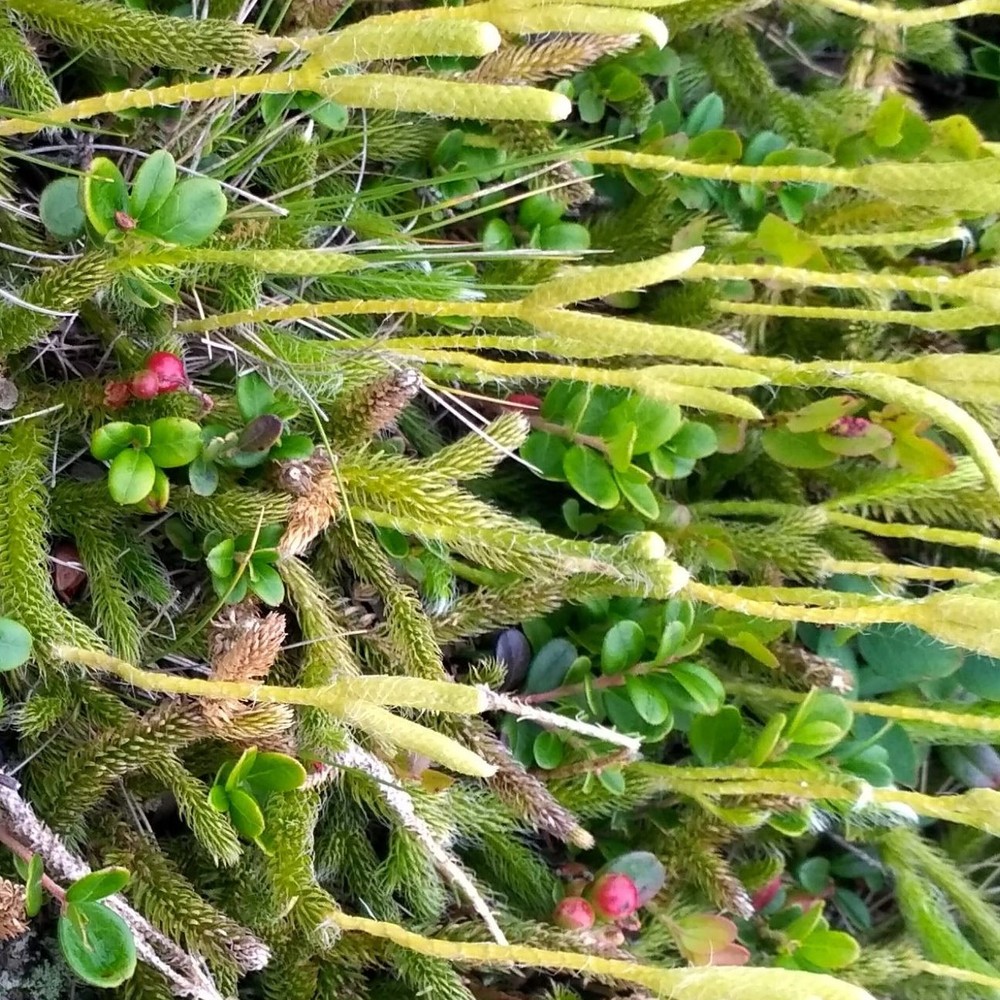Tree club moss
(Pseudolycopodium densum)

Description
Lycopodium deuterodensum is a species of Plantae in the genus Tracheophyta, and was described by Wilhelm Guillermo Gustav or Franz Francis Herter. Lycopodium deuterodensum belongs to the genus Lycopodium, and the family Lycopodiaceae. None of these subspecies are listed. Lycopodium (from Greek lykos, wolf and podion, diminutive of pous, foot) is a genus of clubmosses, also known as ground pines or creeping cedars, in the family Lycopodiaceae. Two very different circumscriptions of the genus are in use. In the Pteridophyte Phylogeny Group classification of 2016 (PPG I), Lycopodium is one of nine genera in the subfamily Lycopodioideae, and has from nine to 15 species. In other classifications, the genus is equivalent to the whole of the subfamily, since it includes all of the other genera. More than 40 species are accepted. They are flowerless, vascular, terrestrial or epiphytic plants, with widely branched, erect, prostrate, or creeping stems, with small, simple, needle-like or scale-like leaves that cover the stem and branches thickly. The leaves contain a single, unbranched vascular strand, and are microphylls by definition. The kidney-shaped (reniform) spore-cases (sporangia) contain spores of one kind only, (isosporous, homosporous), and are borne on the upper surface of the leaf blade of specialized leaves (sporophylls) arranged in a cone-like strobilus at the end of upright stems. The club-shaped appearance of these fertile stems gives the clubmosses their common name. Lycopods reproduce asexually by spores. The plants have an underground sexual phase that produces gametes, and this alternates in the lifecycle with the spore-producing plant. The prothallium developed from the spore is a subterranean mass of tissue of considerable size, and bears both the male and female organs (antheridia and archegonia). They are more commonly distributed vegetatively, though, through above- or below-ground rhizomes. The genus Lycopodium was first published by Carl Linnaeus in 1753. He placed it in the Musci (mosses) along with genera such as Sphagnum, and included species such as Lycopodium selaginoides, now placed in the genus Selaginella in a different order from Lycopodium. Different sources use substantially different circumscriptions of the genus.
Taxonomic tree:







